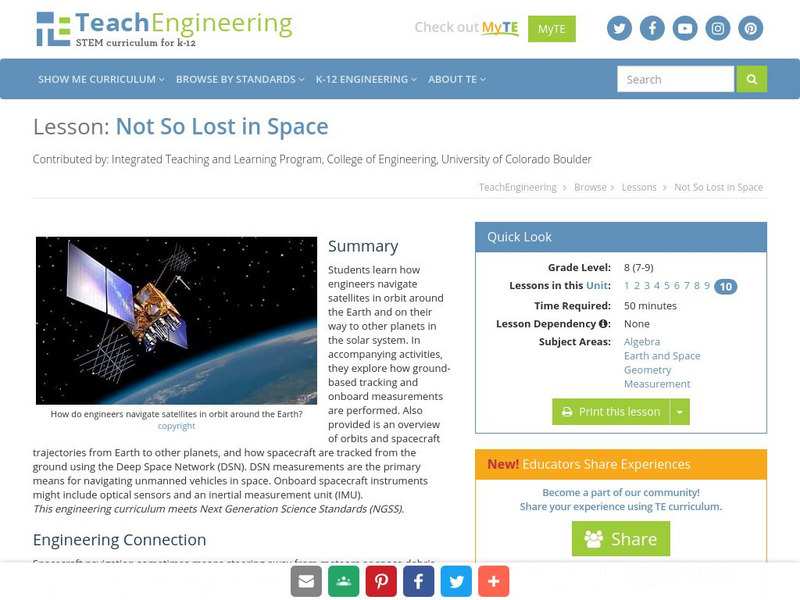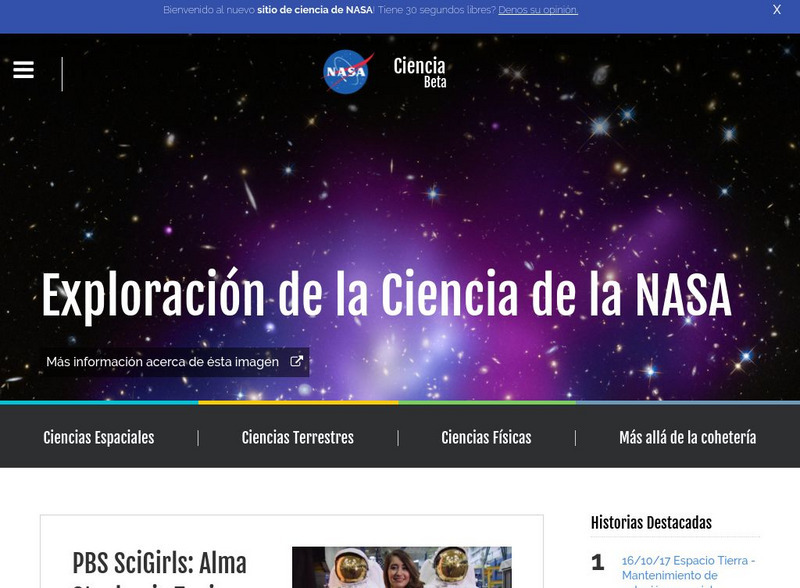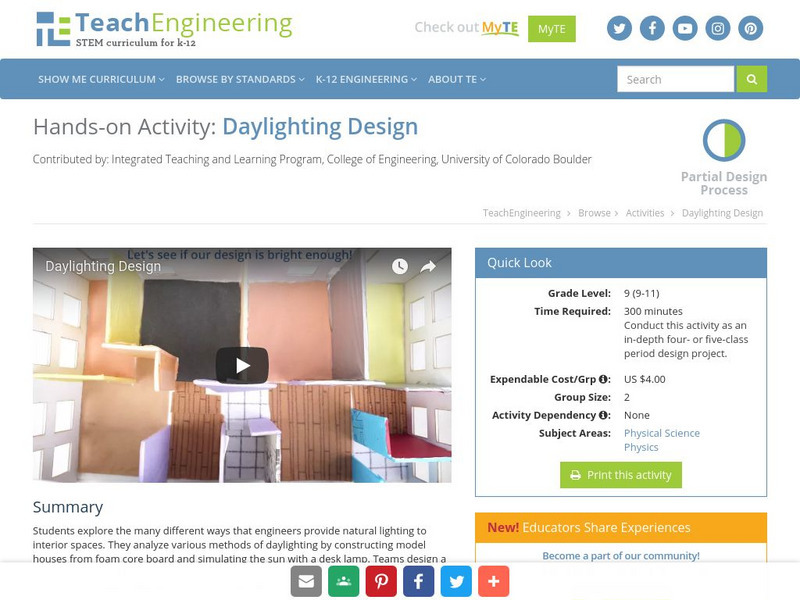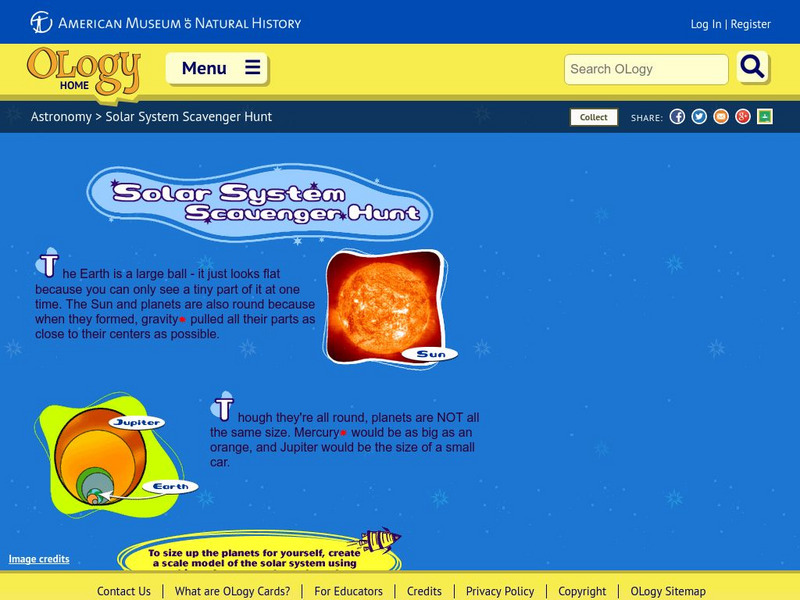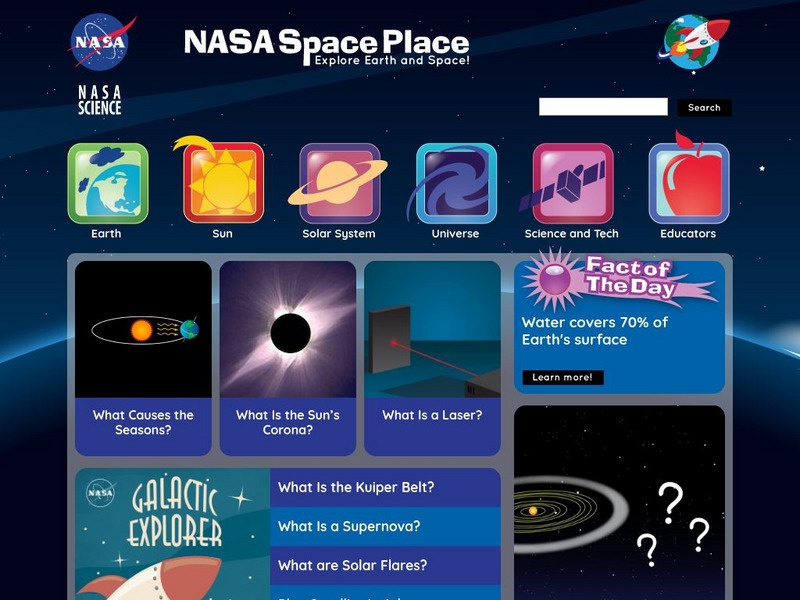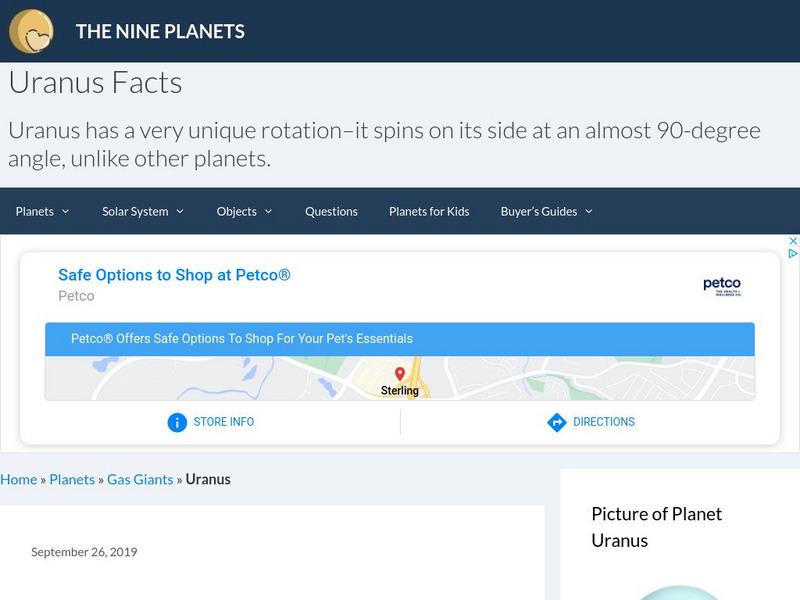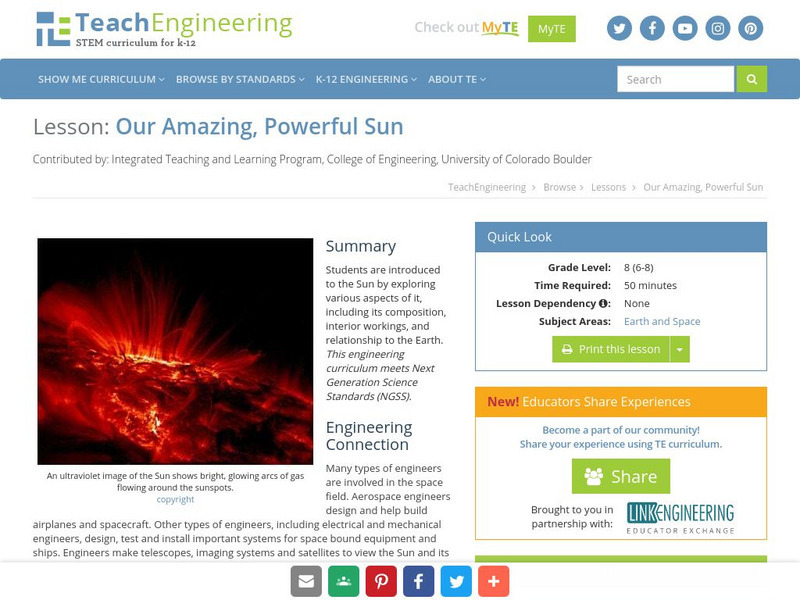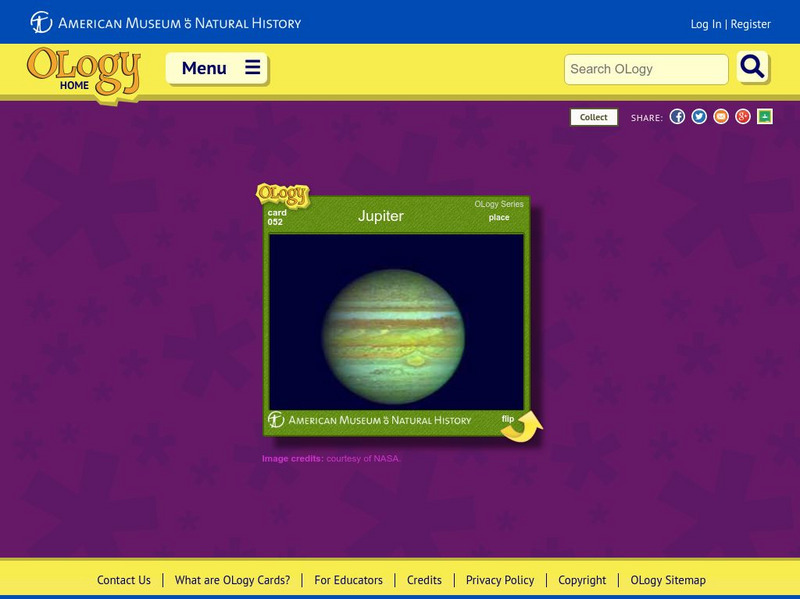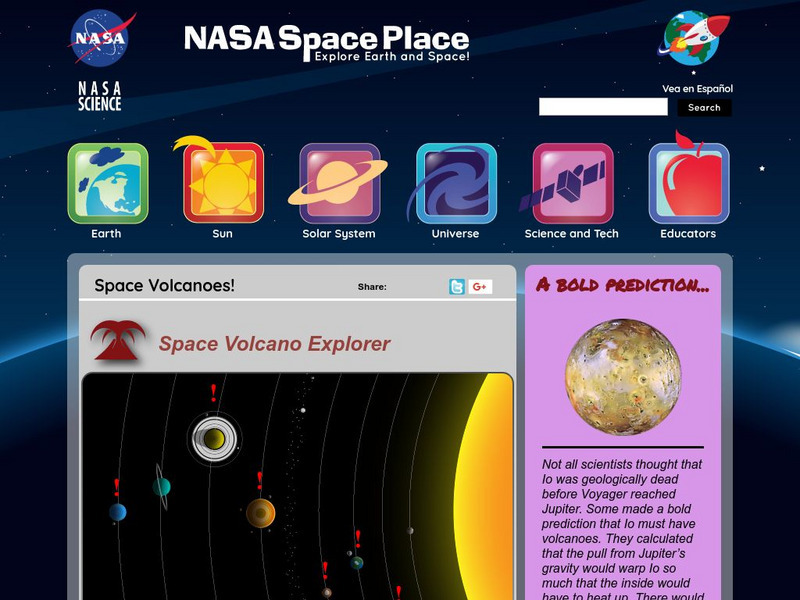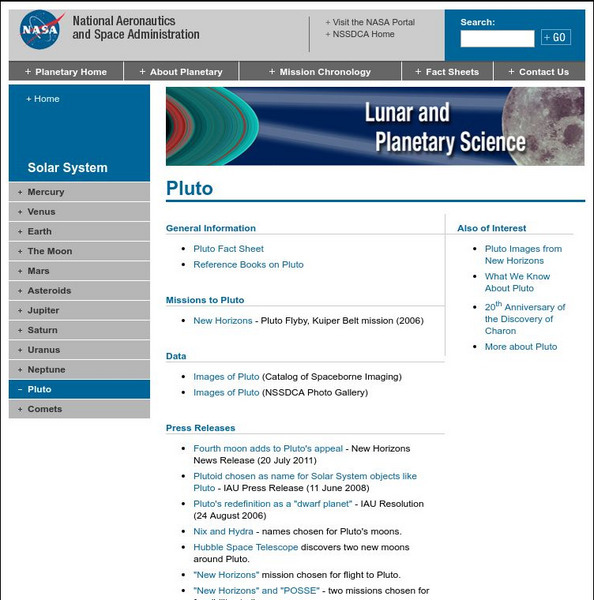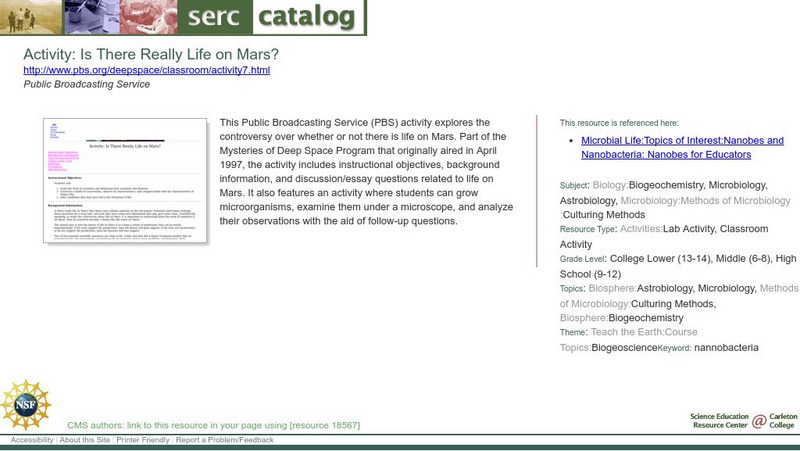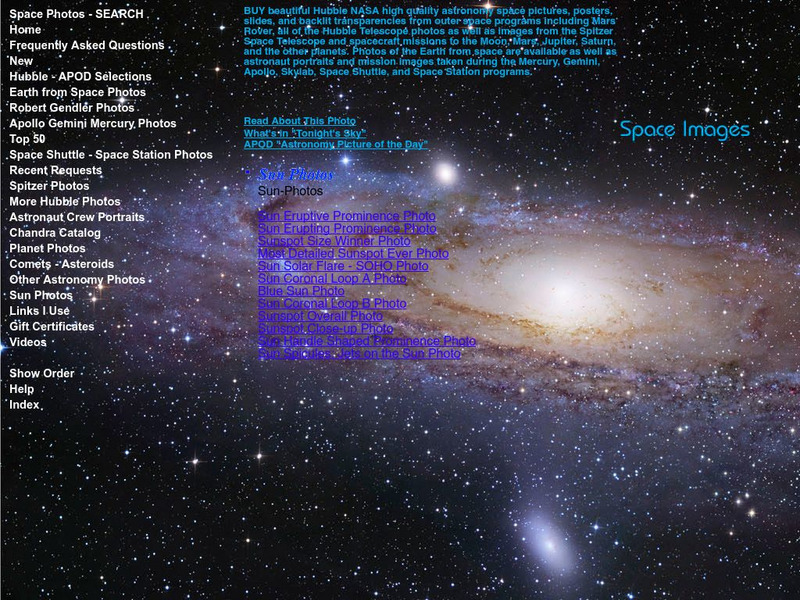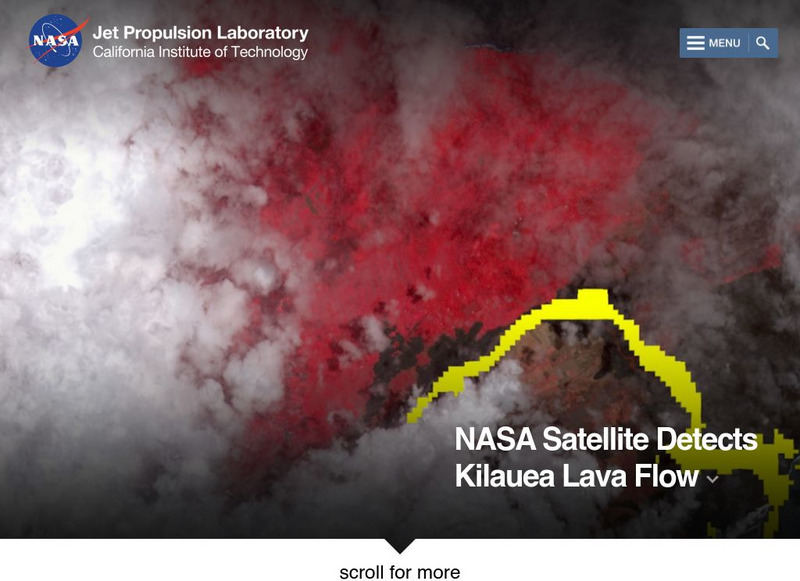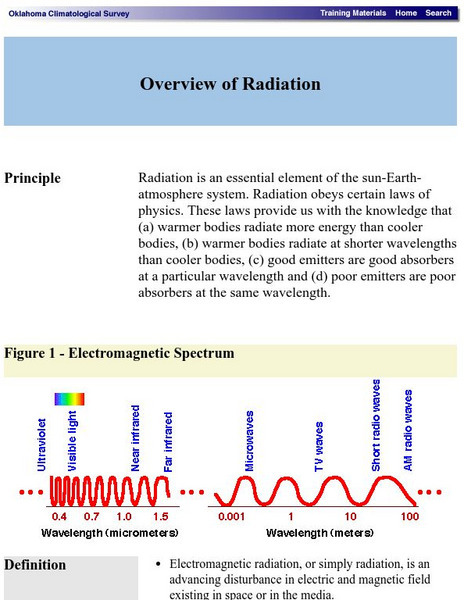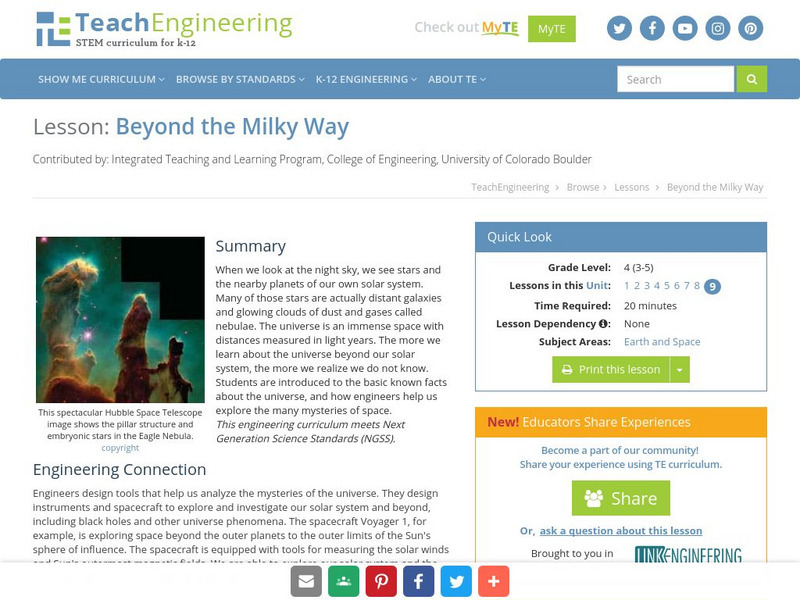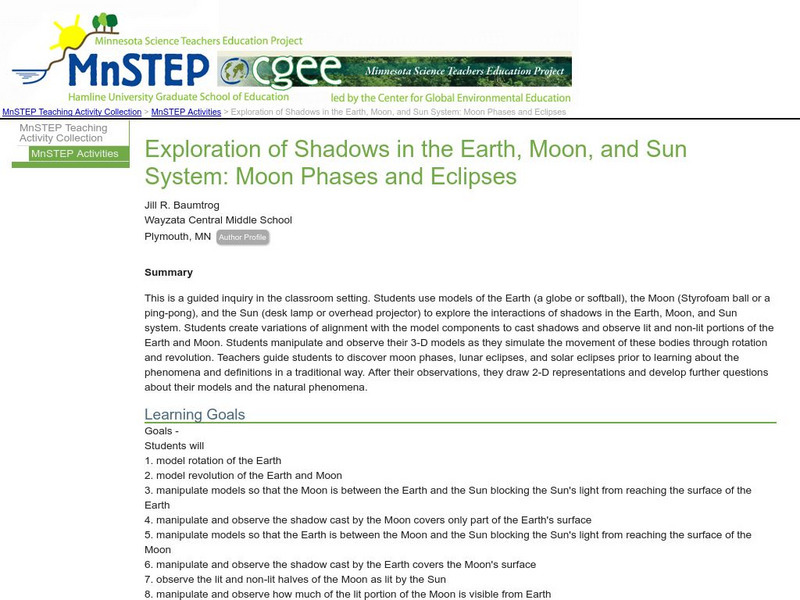Hi, what do you want to do?
TeachEngineering
Teach Engineering: Not So Lost in Space
Students learn how engineers navigate satellites in orbit around the Earth and on their way to other planets in the solar system. In accompanying activities, they explore how ground-based tracking and onboard measurements are performed....
NASA
Nasa: La Historia De Hoy: Today's History (Spanish)
Explore the depths of space and science comprehensive information about the meteor showers in 2004, the transit of Venus, virtual reality, and other interesting science history.
Other
Celestia
This site provides a free space simulation that lets you explore the universe in three dimensions. There is a forum for teachers and lesson plans that help enhance student use of the simulation. A program must be downloaded in order to...
California Institute of Technology
Cool Cosmos: Ask an Astronomer
Explore the mysteries of the black hole! Cool Cosmos presents the answers to the most frequently asked questions about this phenomenon. Kids can click on the easy to use question links to find out more.
TeachEngineering
Teach Engineering: Daylighting Design
Students explore the many different ways that engineers provide natural lighting to interior spaces. They analyze various methods of daylighting by constructing model houses from foam core board and simulating the sun with a desk lamp....
National Science Foundation
National Science Foundation: Astronomy and Space: Research Overview
Explore some of our most fundamental questions about space exploration with this research overview collected by scientists at the National Science Foundation. Additionally, experience deep space first-hand with telescope interactives.
Oklahoma Mesonet
Oklahoma Climatological Survey: The Seasons
Find out what the seasons are and how they change. Through the use of excellent graphics, content explores the Earth's orbit around the sun and how sunlight reaches the earth at equinox and the winter solstice.
American Museum of Natural History
American Museum of Natural History: O Logy: Stuff to Do: Scavenger Hunt
Illustrated instructions for creating a scale model of the solar system.
NASA
Nasa: The Space Place
This site from the National Aeronautics and Space Administration allows students to explore topics related to planet earth and outer space. A number of games and interactive features are available.
Nine Planets
The Nine Planets: Uranus
An excellent report on the planet Uranus. The site includes detailed information about the planet as well as links to information about Uranus moons, unmanned probes sent to explore Uranus, and an extensive set of images of the planet.
TeachEngineering
Teach Engineering: Our Amazing, Powerful Sun
Students are introduced to the Sun by exploring various aspects of it, including its composition, interior workings, and relationship to the Earth.
American Museum of Natural History
American Museum of Natural History: Jupiter O Logy Card
Flip this interactive card to start learning about Jupiter, the largest planet in our solar system. Answer multiple-choice and fact-or-fiction questions and review some fast facts about Jupiter.
American Museum of Natural History
American Museum of Natural History: Saturn O Logy Card
Flip this interactive card to start learning about the planet Saturn. Answer multiple-choice and fact-or-fiction questions and review some fast facts about the second largest planet in our solar system.
NASA
Nasa: Space Place: Space Volcanoes!
Click and explore the solar system to discover where volcanoes can be found, on planets and moons.
Other
British National Space Centre: Space Exploration
A resource on space exploration offering information on unmanned and manned missions as well as on each planet of the solar system and what we have learned about them in recent history.
Johns Hopkins University
New Horizons Website
This site from the Solar System Exploration section of NASA provides an overview of the space mission to Pluto, Charon, and the fringes of our Solar System. It describes the Kuiper Belt, and the objects involved with it, provided links...
NASA
Nasa Space Science Data Archive: Pluto
This site, which is provided by the National Space Science Data Center of NASA, is a site with detailed information about Pluto, including planned missions to explore the planet in greater detail.
Science Education Resource Center at Carleton College
Serc: Activity: Is There Really Life on Mars?
This Public Broadcasting Service (PBS) activity explores the controversy over whether or not there is life on Mars. Part of the Mysteries of Deep Space Program that originally aired in April 1997, the activity includes instructional...
Other
Space Images
Discover brilliant, ominous images of our solar system from space exploration's cutting edge technology. Although this is a commercial site that sells these images, they are still educational and fun to look at.
NASA
Nasa: Jet Propulsion Laboratory
NASA's Jet Propulsion Laboratory at the California Institute of Technology is "the lead US center for robotic exploration of the solar system."
Oklahoma Mesonet
Oklahoma Climatological Survey: Overview of Radiation
This site details what radiation is, the physics of radiation, and radiative transfer as it occurs in nature. Content explores the electromagnetic spectrum, electromagnetic waves, properties of radiation, and solar radiation.
TeachEngineering
Teach Engineering: Beyond the Milky Way
When we look at the night sky, we see stars and the nearby planets of our own solar system. Many of those stars are actually distant galaxies and glowing clouds of dust and gases called nebulae. The universe is an immense space with...
TeachEngineering
Teach Engineering: The Outer Planets
Students explore the outermost planets of our solar system: Saturn, Uranus and Neptune. They also learn about characteristics of Pluto and its interactions with Neptune. Students learn a little about the history of space travel as well...
Science Education Resource Center at Carleton College
Serc: Exploration of Shadows: Earth, Moon, Sun System: Moon Phases Eclipses
A guided inquiry where students participate in the simulation of moon phases and eclipses.





